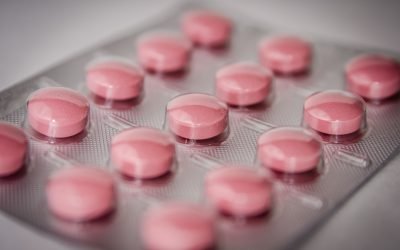Fats have gotten some really bad press over the years, but we are finally overcoming the association that all fats are bad. In fact, healthy fats are your skin’s best friend when it comes to clearing acne. All the technical nutrition terms can get super confusing, so this should break it all down and help you discover why incorporating healthy fats into your diet is a smart move for clear, radiant skin. And, if you’re thinking about taking omega-3 supplements to help clear your acne, I’ve covered that too.
Types of Fats: Saturated, Unsaturated and Trans fats.
Before we dive into the benefits of healthy fats, let’s get familiar with the three main types of dietary fats:
Saturated Fats:
These are commonly found in animal products like meat, dairy, and some plant oils (like coconut oil). I always remember Saturated fats tend to be Solid at room temperature (remember the two s’s). While our bodies need a small amount of saturated fats for specific functions, it’s essential to get the balance right, as too much saturated fat, from the wrong sources, can start to cause an issue. We want to have more unsaturated fat in our diets compared to saturated. Excessive consumption, alongside a low intake of unsaturated fat, has been associated with increased inflammation and negatively affecting cardiovascular health.
Examples of saturated fats:
- Butter, cheese, ghee
- Coconut oil
- Animal fats such as lard
- Red meat such as lamb, beef and pork
Note: these foods still have significant health benefits, but it’s about how much you have alongside unsaturated fats.
Unsaturated Fats:
The real heroes of the fat world! Unsaturated fats can be further divided into two categories: monounsaturated and polyunsaturated fats. These fats have anti-inflammatory properties and can help maintain skin health. These are the things we want in our diet every day.
Examples
- Olive oil and olives
- Avocado oil or avocados
- All nuts & seeds
- Fatty fish (salmon, mackerel, trout, sardines, anchovies, kippers)
Trans Fats:
These fats are artificially created during a process known as hydrogenation (look out for hydrogenated fats on food labels), where unsaturated fats are converted into more stable but unhealthy trans fats. Trans fats are found in processed and fried foods and have been linked to numerous health issues, including inflammation and cardiovascular disease. We really don’t want these foods in our diet much at all – in fact, the recommended daily intake is 1% of your calorie intake comes from trans fat (I avoid these as much as possible, I also don’t count calories but hey, that’s the official stat).
Examples
- Packaged snacks
- Crisps
- Fast food
- Deep-fried foods
- Margarine and oil sprays (like the low-calorie oil sprays)
The Importance of Essential Fatty Acids for Acne
Now, let’s talk about essential fatty acids (EFAs), specifically omega-3 and omega-6. These are known as essential fatty acids because our bodies can’t make them – we have to get them from food. If you’re not eating essential fatty acids, you will be deficient in them.
Omega-3: The Acne-Fighting Champion
Omega-3 fatty acids are known for their anti-inflammatory properties, which will be particularly beneficial for individuals dealing with chronic, inflamed acne. These essential fatty acids can help reduce inflammation, redness, and swelling associated with acne breakouts. But some other benefits include:
- Maintaining healthy hydration within the skin
- Regulating sebum (oil) production within the skin
- Supporting healthy hormones
- Supporting blood glucose control & insulin sensitivity
- Supporting cardiovascular health (you need good circulation for healthy skin)
Omega-6: A Double-Edged Sword
Omega-6 fatty acids are essential too; similar to omega-3, they help with:
- Maintaining hydration within the skin
- Supporting healthy hormones
- Reducing inflammation
But, too much omega-6 relative to omega-3 can tip the balance toward inflammation – precisely what we don’t want. It’s all about balancing these two types of fatty acids for optimal skin health – I know, why is nutrition so confusing?!
Balancing Omega 3 & Omega 6 for Healthy Skin
In an ideal world, our omega-6 to omega-3 ratio should be roughly 4:1 or lower – the best would be 1:1. Unfortunately, due to the prevalence of processed and fast foods in modern diets, the typical ratio can range from 10:1 to 25:1 or even higher, promoting inflammation and potentially aggravating acne. That’s why we really want to prioritise omega-3 food sources. These include:
- Oily fish (salmon, mackerel, trout, herring, kippers, anchovies, sardines)
- Walnuts
- Flaxseeds & flaxseed oil
- Chia seeds
- Olives & olive oil
- Avocados & avocado oil
The truth about plant sources of omega-3
We’re going a bit deeper into the science now. But this is essential to understand when using healthy fats to clear acne. There are three primary forms of omega-3 that we get from food, and they are Alpha-Linolenic Acid (ALA), Eicosapentaenoic Acid (EPA) and Docosahexaenoic Acid (DHA).
- Alpha-Linolenic Acid (ALA) is a plant-based omega-3 fatty acid and the most common type found in vegan sources like flaxseeds, chia seeds, and walnuts. Our bodies can convert ALA into the longer-chain omega-3 fatty acids EPA and DHA, but the conversion process is limited and not very efficient. As a result, only a small percentage of ALA gets converted into EPA and DHA.
- Eicosapentaenoic Acid (EPA) is a long-chain omega-3 fatty acid primarily found in fatty fish, algae, and fish oil supplements. It is a potent anti-inflammatory agent and plays a crucial role in various bodily processes such as brain function, mood, cardiovascular health and skin health.
- Docosahexaenoic Acid (DHA) is another long-chain omega-3 fatty acid present in fatty fish, algae, and fish oil supplements. It is essential for proper brain function, eye health, and also helps to reduce inflammation.
So, suppose you’re following a plant-based diet or allergic to fish, or maybe you don’t like the taste; you can see how it can make it difficult to get enough EPA & DHA intake from food alone – you’ll be relying on 1) Eating enough ALA sources of food, and 2) Hoping that your body is a good converter of ALA to DHA & EPA – but unfortunately even if you’re good at converting, on average only around 7-11% of ALA actually makes it to EPA, and even less to DHA. This is where supplementation is needed, but again, it’s important to know your doses, as some algae supplements are high in DHA but really low in EPA.
How do I know if I’m deficient in omega-3?
There are a few signs and symptoms that might indicate that you need some more essential fatty acids in your diet. These include:
- Dry, dehydrated, or flaky skin
- Allergies
- Dry eyes
- Joint pain & stiffness
- Dry, weak or brittle hair
- Low mood
To be more accurate, a blood test can reveal whether you have an omega-3 deficiency and check the ratio of omega-3 vs omega-6 in your red blood cells. By having this test done, you can take steps to correct it through dietary changes and get the exact dose you need through supplements.
If you were still wondering whether omega-3 can help with acne, it can, but getting the dosage right is important. Also, EPA & DHA are the best forms of omega-3 to clear acne. Omega-3 supplements are among the most common supplements I use in my practice. But remember, incorporating the right fats into your diet is always where we want to start. Food must always be the foundation, but you might need a little extra help for chronic skin conditions.
Always work with a nutritionist (like me) if you’re considering introducing supplements to ensure they’re safe and the correct dosage for your body’s needs.





0 Comments